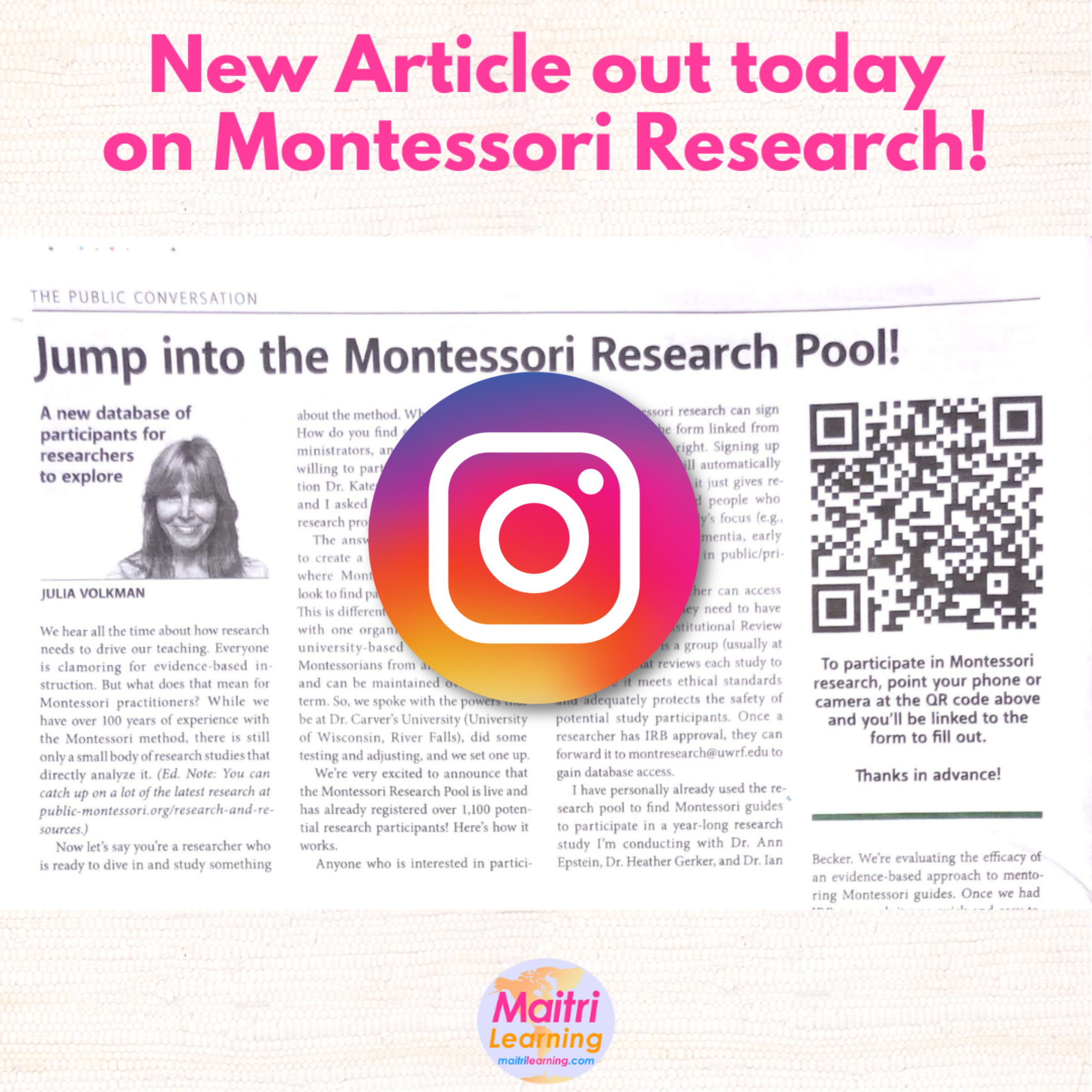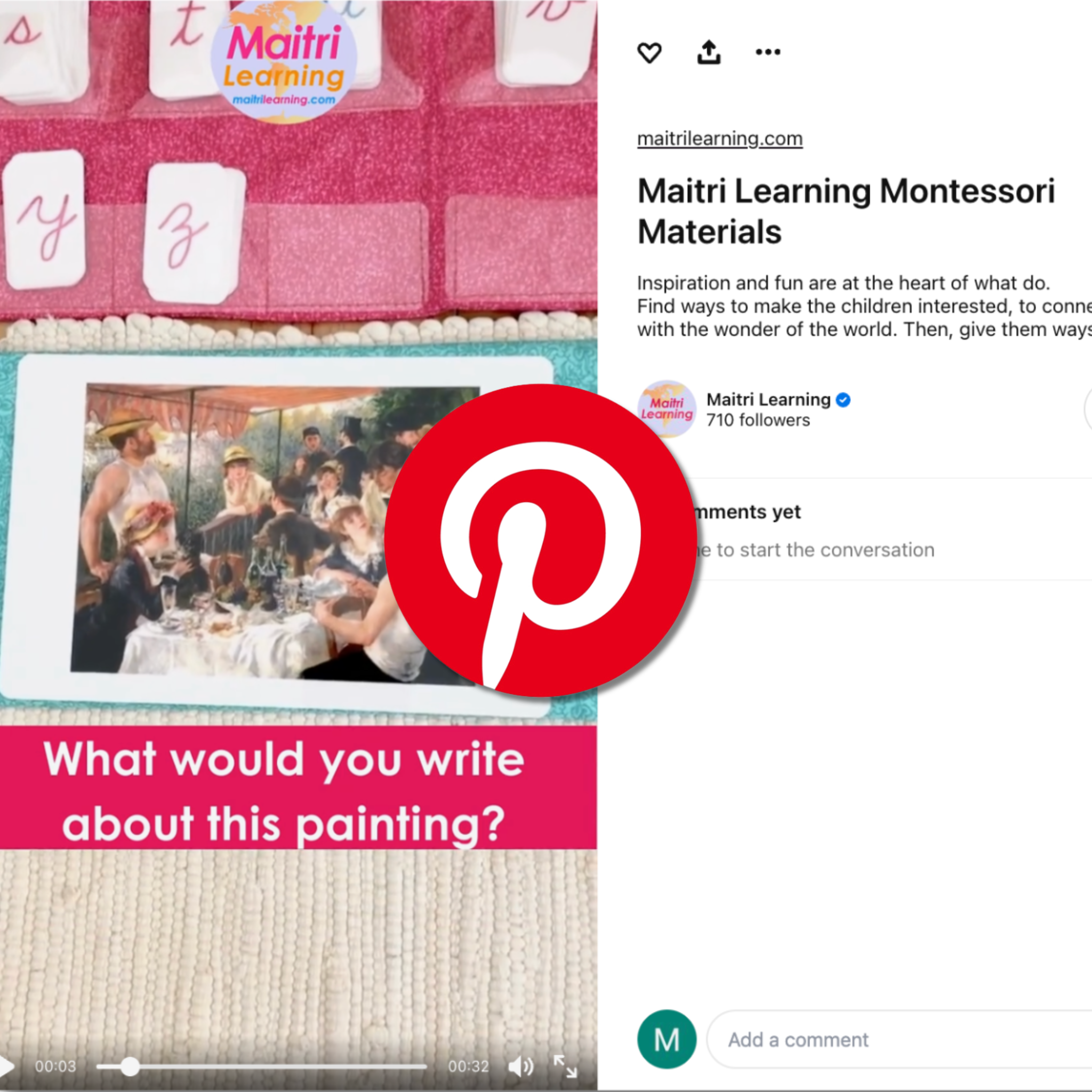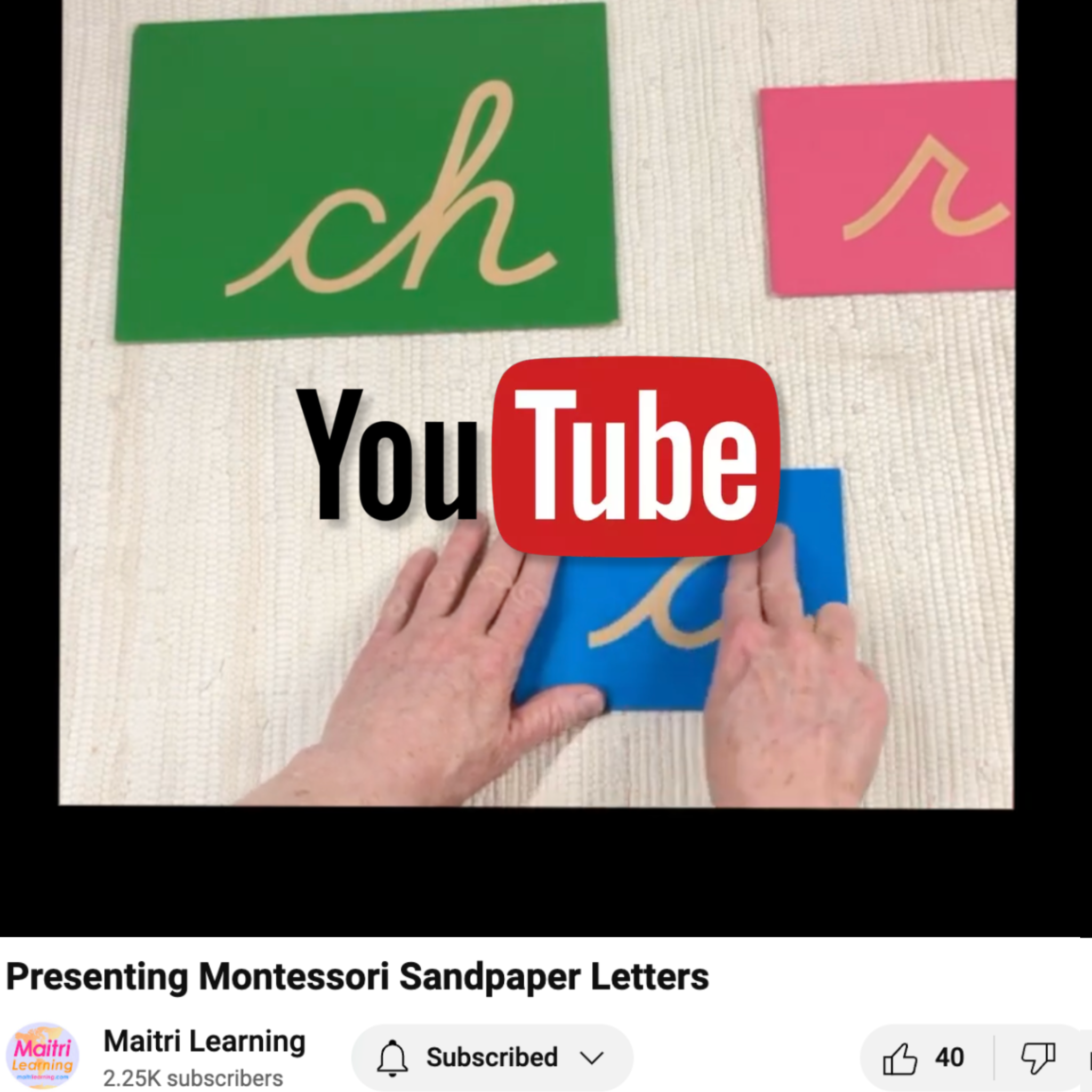Montessori Research
Direct Support for the Montessori Method
Note that this list only includes well-controlled, peer-reviewed clinical studies. There are many other quasi-experimental or methodologically-weak studies that have been conducted on Montessori education. Note also that all of these reliable studies found support only for the Montessori method when implemented in accordance with the standardized practice taught by the Association Montessori Internationale (AMI), the organization Dr. Montessori founded and entrusted to maintain her teachings.
- Afshan, A., Mushtaq, A., Rehna, T., Sabih, F., & Najmussaqib, A. (2022). Effectiveness of Montessori Sensorial Training Program for Children with Mild Intellectual Disabilities in Pakistan: A Randomized Control Trial. International Journal of Disability, Development and Education, 1-11.
-
Ansari, A., & Winsler, A. (2020). The long-term benefits of Montessori pre-K for Latinx children from low-income families. Applied Developmental Science, 1-15.
-
Ansari, A., & Winsler, A. (2022). The long-term benefits of Montessori pre-K for Latinx children from low-income families. Applied Developmental Science, 26(2), 252-266.
- Bahatheg, R. (2011). How the use of Montessori sensorial material supports children’s creative problem solving in the pre-school classroom (Doctoral dissertation, University of Southampton).
-
Basargekar, A., & Lillard, A. S. (2021). Math achievement outcomes associated with Montessori education. Early Child Development and Care, 1-12.
- Besançon, M., & Lubart, T. (2008). Differences in the development of creative competencies in children schooled in diverse learning environments. Learning and Individual Differences, 18(4), 381-389.
- Besançon, M., Lubart, T., & Barbot, B. (2013). Creative giftedness and educational opportunities. Educational & Child Psychology, 30(2), 79-88.
- Brown, K., Powell, K., & Woodford, L. (2024). Montessori: Evidence-Based Reading Curricula. Montessori Literacy Committee.
- Cartwright, J., Roberts, K., Oliver, E., Bennett, M., & Whitworth, A. (2022). Montessori mealtimes for dementia: A pathway to person-centred care. Dementia, 21(4), 1098-1119.
- Debs, M. C. (2016). Racial and economic diversity in US public Montessori schools. Journal of Montessori Research, 2(2), 15-34.
- Denervaud, S., Christensen, A., Kenett, Y., & Beaty, R. (2022 Jan 19). How school systems shape childrens’ knowledge and creative abilities. NPJ Science of Learning: Behind the Paper.
- Denervaud, S. (2024). The impact of educational experiences on brain development: insights from Montessori and traditional schooling. Spring Nature Research Communities.
-
Denervaud S., Christensen, A., Kenett, Y., & Beaty R. (2022) How school systems shape childrens’ knowledge and creative abilities. Neuroscience.
-
Denervaud, S., Fornari, E., Yang, X. F., Hagmann, P., Immordino-Yang, M. H., & Sander, D. (2020). An fMRI study of error monitoring in Montessori and traditionally-schooled children. NPJ science of learning, 5(1), 1-10.
- Denervaud, S., Knebel, JF., and Gentaz, E. (2019). Beyond executive functions, creativity skills benefit academic outcomes: Insights from Montessori education. PLOS One.
- Denervaud, S., Knebel, JF., Immordino-Yang, MH., and Hagmann, P. (2020). Effects of Traditional Versus Montessori Schooling on 4‐ to 15‐Year Old children's Performance Monitoring. Mind, Brain, and Education, 14(2).
- Denervaud, S., Hess, A., Sander, D., & Pourtois, G. (2021). Children’s automatic evaluation of self‐generated actions is different from adults. Developmental Science, 24(3), e13045.
- Diamond, A. & Lee, K. (2011). Interventions shown to aid executive function development in children 4 to 12 years old. Science, 333(6045), 959-964.
- Dohrmann, K. R., Nishida, T. K., Gartner, A., Lipsky, D. K., & Grimm, K. J. (2007). High school outcomes for students in a public Montessori program. Journal of Research in Childhood Education, 22(2), 205-217.
- Jackson, R. L. (2011). The Montessori Method‟ s Use of Seguin's Three-Period Lesson and Its Impact on the Book Choices and Word Learning of Students who are Deaf or Hard of Hearing (Doctoral dissertation, Columbia University).
- Khaledi, M., Heirani, A., & Sabaghi, A. (2022). Effects of Eight Weeks of Selected Virtual-Assisted Montessori-Based Games on Motor Proficiency and Perceived Self-Control in Children with Spastic Hemiplegia during the Coronavirus Outbreak. BioMed Research International, 2022.
- Kahn, D. (2003). Montessori and optimal experience research: Toward building a comprehensive education reform. NAMTA Journal, 28(3), 1-11.
- Kayılı, G. (2016). The effect of Montessori method on cognitive tempo of kindergarten children. Early Child Dev. Care. doi: 10.1080/03004430.2016.1217849
- Lillard, A.S., et al., (2025). A national randomized controlled trial of the impact of public Montessori preschool at the end of kindergarten. PNAS, 122 (43) e2506130122.
- Lillard, A. S., Jiang, R. H., & Tong, X. (2025). Perfect Timing: Sensitive Periods for Montessori Education and Long-Term Wellbeing. Frontiers in Developmental Psychology, 3, 1546451.
-
Lillard, A. S., Meyer, M. J., Vasc, D., & Fukuda, E. (2021). An Association Between Montessori Education in Childhood and Adult Wellbeing. Frontiers in Psychology, 5351.
-
Lillard, A. S., Taggart, J., Yonas, D., & Seale, M. N. (2021). An Alternative to “No Excuses”: Considering Montessori as Culturally Responsive Pedagogy.
-
Lillard, A. S. (2020). Montessori as an alternative early childhood education. Early Child Development and Care, 1-11.
- Lillard, A.S. (2012). Preschool children's development in classic Montessori, supplemented Montessori, and conventional programs. J School Psychology, 50(3), 379-401.
- Lillard, A. S. (2005). Montessori: The science behind the genius. Oxford University Press.
- Lillard, A. S. & Eisen, S. (2017). “Why Montessori is a facilitative environment for theory of mind: three speculations,” in Theory of Mind Development in Context, eds V. Slaughter and M. de Rosnay (London: Routledge), 57–70.
- Lillard, A., & Else-Quest, N. (2006). The early years: evaluating montessori. Science, 313(5795), 1893-1894.
- Lillard, A. S., & Heise, M. J. (2016). Removing supplementary materials from Montessori classrooms changed child outcomes. J. Montessori Res. 2, 17–27. doi: 10.17161/jomr.v2i1.5678
- Lillard, A. S. (2011). Mindfulness practices in education: Montessori’s approach. Mindfulness, 2(2), 78-85.
- Lillard, A. S. (2013). Playful Learning and Montessori Education. American Journal of Play, 5(2), 157-186.
- Lillard, A. (2008). How important are the Montessori materials. Montessori Life, 20(4), 20-25.
- Marshall, C. (2017). Montessori education: A review of the evidence base. npj Science of Learning. 2(11).
-
Mix, K. S., Smith, L. B., Stockton, J. D., Cheng, Y. L., & Barterian, J. A. (2017). Grounding the Symbols for Place Value: Evidence From Training and Long-Term Exposure to Base-10 Models. Journal of Cognition and Development, 18(1), 129-151.
- Postlewaite, DEL. (2024). Experiences of Montessori Guides and Administrators Supporting Students with Developmental Delays or Disabilities: Evaluating the impact of the ages adn stages questionnaires training on Montessori guides and administrators supporting students with developmental delays or disabilities. AMI USA.
- Rathunde, K., & Csikszentmihalyi, M. (2005). Middle school students’ motivation and quality of experience: A comparison of Montessori and traditional school environments. American Journal of Education, 111(3), 341-371.
- Rathunde, K. (2003). A comparison of Montessori and traditional middle schools: Motivation, quality of experience, and social context. NAMTA Journal, 28(3), 12-53.
- Rathunde, K. (2001). Montessori education and optimal experience: A framework for new research. NAMTA Journal, 26(1), 11-44.
- Rathunde, K., & Csikszentmihalyi, M. (2014). The social context of middle school: Teachers, friends, and activities in Montessori and traditional school environments. In Applications of Flow in Human Development and Education (pp. 189-213). Springer Netherlands.
- Rathunde, K. (2009). Montessori and Embodied Education. Alternative Education for the 21st Century: Philosophies, Approaches, Visions, 189.
- Rodriguez, L., Irby, B. J., Brown, G., Lara-Alecio, R., & Galloway, M. M. (2005). An analysis of second grade reading achievement related to pre-kindergarten Montessori and transitional bilingual education. Review of Research and Practice, 3.
- "...children who had participated in a prekindergarten Montessori bilingual program significantly outscored the children who had participated in a traditional bilingual prekindergarten program on the Spanish reading subtest of the Aprenda achievement test."
- Schetter, M., Romascano, D., Gaujard, M., Rummel, C., & Denervaud, S. (2023). Learning by Heart or with Heart: Brain Asymmetry Reflects Pedagogical Practices. Brain Sciences, 13(9), 1270.
- Snyder, L., Tong, X., & Lillard, A. S. (2022). Standardized Test Proficiency in Public Montessori Schools. Journal of School Choice, 16(1), 105-135.
- Snyder, A., LeBoeuf, L., & Lillard, A. S. (2023). “My Name Is Sally Brown, and I Hate School!”: A retrospective study of school liking among conventional and Montessori school alumni. Psychology in the Schools, 60(3), 541-565.
- Volkman, J. (2006). Lamination study: Vocabulary cards in the Montessori primary classroom.
Paula Lillard Preschlack's Resource Guide for Montessori Enthusiasts
Conceptual Support for Montessori Ideas
Why we need early education
- Als, H., Duffy, F. H., McAnulty, G. B., Rivkin, M. J., Vajapeyam, S., Mulkern, R. V., ... & Eichenwald, E. C. (2004). Early experience alters brain function and structure. Pediatrics, 113(4), 846-857.
- National Scientific Council on the Developing Child (2007). The Timing and Quality of Early Experiences Combine to Shape Brain Architecture: Working Paper No. 5. Retrieved from www.developingchild.harvard.edu
- Richter, L. M., Behrman, J. R., Britto, P., Cappa, C., Cohrssen, C., Cuartas, J., et al. (2021). Measuring and forecasting progress in education: what about early childhood?. npj Science of Learning, 6(1), 1-7.
- Shonkoff, J. P., & Phillips, D. A. (2000). From neurons to neighborhoods: The science of early childhood development. National Academy Press, 2101 Constitution Avenue, NW, Lockbox 285, Washington, DC 20055.
- Shonkoff, J. P. (2010). Building a new biodevelopmental framework to guide the future of early childhood policy. Child development, 81(1), 357-367.
Why we have freedom AND discipline (responsible choices): Executive Functions
- Barker, J. E., Semenov, A. D., Michaelson, L., Provan, L. S., Snyder, H. R., & Munakata, Y. (2014). Less-structured time in children's daily lives predicts self-directed executive functioning. Frontiers in psychology, 5.
- Center for the Developing Child at Harvard University. Video (below).
- Diamond, A. (2013). Executive Functions. Annual Review of Psychology, 64, 135–168. http://doi.org/10.1146/annurev-psych-113011-143750.
- Robson, S. (2015). Self‐regulation and metacognition in young children: Does it matter if adults are present or not?. British Educational Research Journal.
Why we allow children to choose their work (sparks interest):
- Renninger, K. A., & Hidi, S. (2011). Revisiting the conceptualization, measurement, and generation of interest. Educational Psychologist, 46(3), 168-184.
Grace & courtesy in the early childhood classroom
- Ayoub, C., Vallotton, C. D., & Mastergeorge, A. M. (2011). Developmental pathways to integrated social skills: The roles of parenting and early intervention. Child development, 82(2), 583-600.
Support for sandpaper letters
- Bara, F., Gentaz, E., Colé, P., & Sprenger-Charolles, L. (2004). The visuo-haptic and haptic exploration of letters increases the kindergarten-children’s understanding of the alphabetic principle. Cognitive development, 19(3), 433-449.
- Caramazza, A., Chialant, D., Capasso, R., & Miceli, G. (2000). Separable processing of consonants and vowels. Nature, 403(6768), 428-430.
- Explains why Montessori was right to make consonants and vowels different colors in the sandpaper letters/movable alphabet
- Krafnick, A. J., Flowers, D. L., Napoliello, E. M., & Eden, G. F. (2011). Gray matter volume changes following reading intervention in dyslexic children. Neuroimage, 57(3), 733-741.
- Tracing letters increases the amount of gray matter in our brain...the mind is made by the work of the hand
-
Meng, Z. L., Wydell, T. N., & Bi, H. Y. (2019). Visual-motor integration and reading Chinese in children with/without dyslexia. Reading and Writing, 32(2), 493-510.
- Demonstrates that visual-motor integration is intrinsically related to reading ability
-
Zemlock, D. Y. (2016). Learning About Letters through Handwriting Practice. IU Journal of Undergraduate Research, 2(1), 56-62.
Why cursive is preferred: Theory
- Atsma, J. et al. (2014). No peri-saccadic mislocalization with abruptly cancelled saccades. Journal of Neuroscience, 15 April 2014. Retrieved from http://www.jneurosci.org/content/34/16/5497.full.html
- Discusses how errors in neural commands for eye fixation may be reduced by cursive training.
-
Kersey, A. J., & James, K. H. (2013). Brain activation patterns resulting from learning letter forms through active self-production and passive observation in young children. Frontiers in psychology, 4(567), 10-3389.
- This brain imaging study shows that children do not differentiate (in the brain) between print and cursive letters. Previous research suggests that adults do. This supports the concept that children can learn either print or cursive (and that they can learn phonograms at the same time as individual letters) because the child's brain is in a different developmental period.
- Longcamp, M., Boucard, C., Gilhodes, J. C., Anton, J. L., Roth, M., Nazarian, B., & Velay, J. L. (2008). Learning through hand-or typewriting influences visual recognition of new graphic shapes: Behavioral and functional imaging evidence. Journal of Cognitive Neuroscience, 20(5), 802-815.
- Longcamp, M., Hlushchuk, Y., and Hari, R. (2011). What differs in the visual recognition of handwritten vs. printed letters? an fMRI study. Hum. Brain Mapp. 32, 1250–1259. doi: 10.1002/hbm.21105
- Mueller, P. A., & Oppenheimer, D. M. (2014). The pen is mightier than the keyboard advantages of longhand over laptop note taking. Psychological science, 0956797614524581.
- Planton, S., Jucla, M., Roux, F.E., & Demonet, J.F. (2013). The "handwriting brain": a meta-analysis of neuroimaging studies of motor versus orthographic processes. Cortex. 49(10):2772-87. doi: 10.1016/j.cortex.2013.05.011.
- Qiao, E., Vinckier, F., Szwed, M., Nacccache, L., Valabrègue, R., Dehaene, S., et al. (2010). Unconsciously deciphering handwriting: subliminal invariance for handwritten words in the visual word form area. Neuroimage 49, 1786–1799. doi: 10.1016/j.neuroimage.2009.09.034
- Shen, K., & Paré, M. (2014). The Journal of Neuroscience, 34(16), 5640-5648.
- Discusses training (similar to learning cursive) can change the ability of the visual cortex in tracking tasks (which influence many cognitive domains)
Mixed-aged group
-
Bell, E. R., Greenfield, D. B., & Bulotsky-Shearer, R. J. (2013). Classroom age composition and rates of change in school readiness for children enrolled in Head Start. Early Childhood Research Quarterly, 28(1), 1-10.
-
Christie, J. F., & Stone, S. J. (1999). Collaborative literacy activity in print-enriched play centers: Exploring the “zone” in same-age and multi-age groupings. Journal of Literacy Research, 31(2), 109-131.
- Furman, W., Rahe, D. F., & Hartup, W. W. (1979). Rehabilitation of socially withdrawn preschool children through mixed-age and same-age socialization. Child development, 915-922.
-
Justice, L. M., Logan, J. A., Purtell, K., Bleses, D., & Hogden, A. (2017). Does mixing age groups in early childhood education settings support children’s language development? Applied Developmental Science, 1-13.
-
Mounts, N. S., & Roopnarine, J. L. (1987). Social-cognitive play patterns in same-age and mixed-age preschool classrooms. American Educational Research Journal, 24(3), 463-476.
-
Veenman, S. (1995). Cognitive and noncognitive effects of multigrade and multi-age classes: A best-evidence synthesis. Review of educational research, 65(4), 319-381.
How rewards and punishments get in the child's way
- Hamilton, V. J., & Gordon, D. A. (1978). Teacher-child interactions in preschool and task persistence. American Educational Research Journal, 15(3), 459-466.
Why we isolate the stimuli and use multi-sensory teaching apparatus
- Holtby, R. C., & D’Angiulli, A.M. (2012). The effects of interference on recognition of haptic pictures in blindfolded sighted participants: The modality of representation of haptic information. Scandinavian journal of psychology, 53(2), 112-118.
Support for the practice of fading and observing immediately after giving a lesson
- Kester, L., & Kirschner, P. A. (2009). Effects of fading support on hypertext navigation and performance in student-centered e-learning environments. Interactive Learning Environments, 17(2), 165-179.
Support for no dress up in the classroom
- Lillard, A. S., Lerner, M. D., Hopkins, E. J., Dore, R. A., Smith, E. D., & Palmquist, C. M. (2013). The impact of pretend play on children's development: A review of the evidence. Psychological Bulletin, 139(1), 1.
- Lillard, A. S., Pinkham, A., & Smith, E. (2011). Pretend play and cognitive development. The Wiley-Blackwell handbook of childhood cognitive development, 285-311.
Why we do one thing at a time; Multi-tasking has a high cost
- Rogers, R. D., & Monsell, S. (1995). Costs of a predictible switch between simple cognitive tasks. Journal of experimental psychology: General, 124(2), 207.
Practical life activities support motor skill development
- Rule, A. C., & Stewart, R. A. (2002). Effects of practical life materials on kindergartners' fine motor skills. Early Childhood Education Journal, 30(1), 9-13.
Why we color code all the activities
- Thorndike, A. N., Riis, J., Sonnenberg, L. M., & Levy, D. E. (2014). Traffic-light labels and choice architecture: promoting healthy food choices. American Journal of Preventive Medicine, 46(2), 143-149.
Research on the history of the method in the US
- Whitescarver, K., & Cossentino, J. (2008). Montessori and the Mainstream: A Century of Reform on the Margins. The Teachers College Record, 110(12), 2571-2600.
Why we keep our walls and shelves uncluttered
- Fisher, A. V., Godwin, K. E., & Seltman, H. (2014). Visual Environment, Attention Allocation, and Learning in Young Children When Too Much of a Good Thing May Be Bad. Psychological science, 25(7), 1362-1370.





